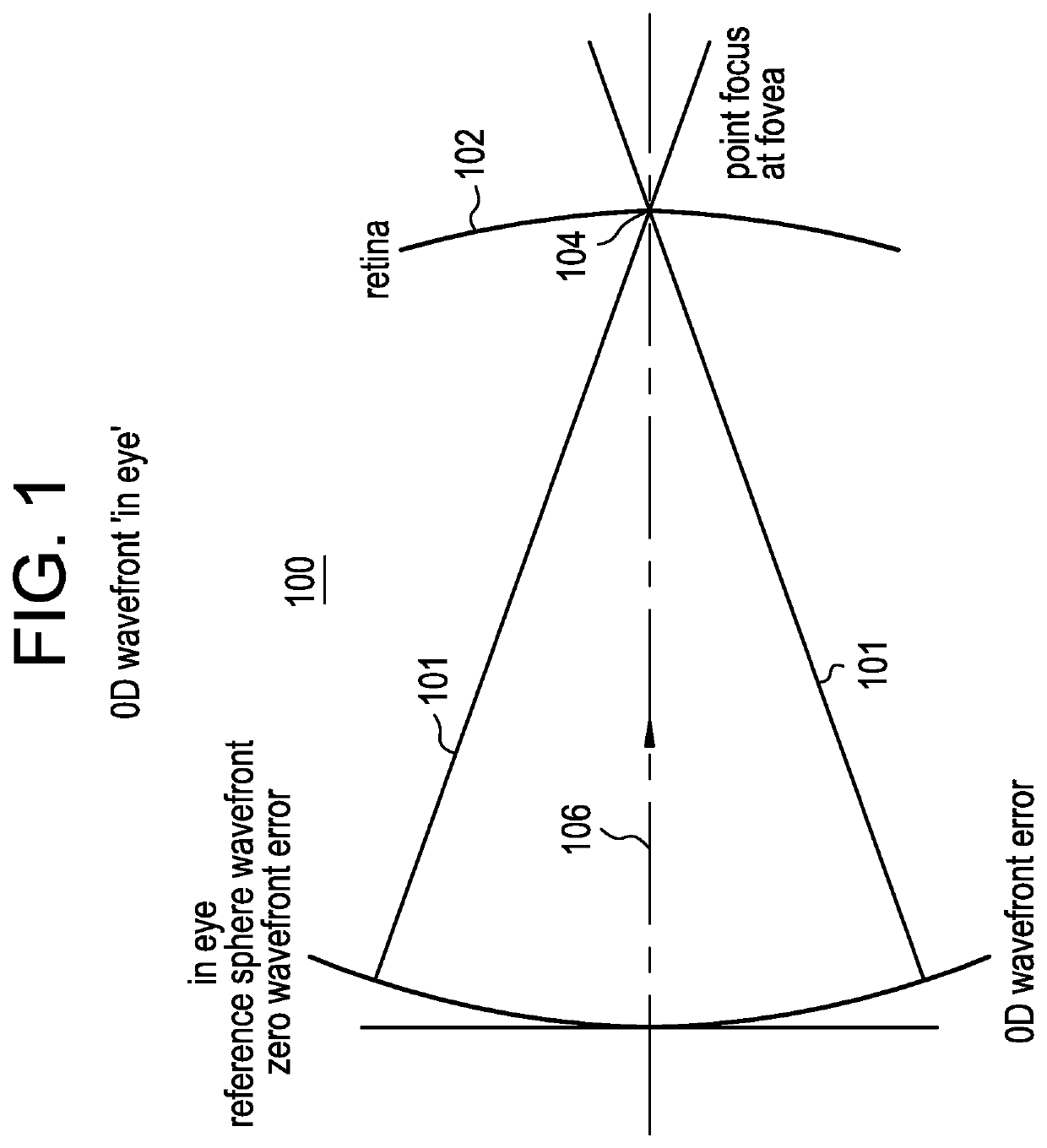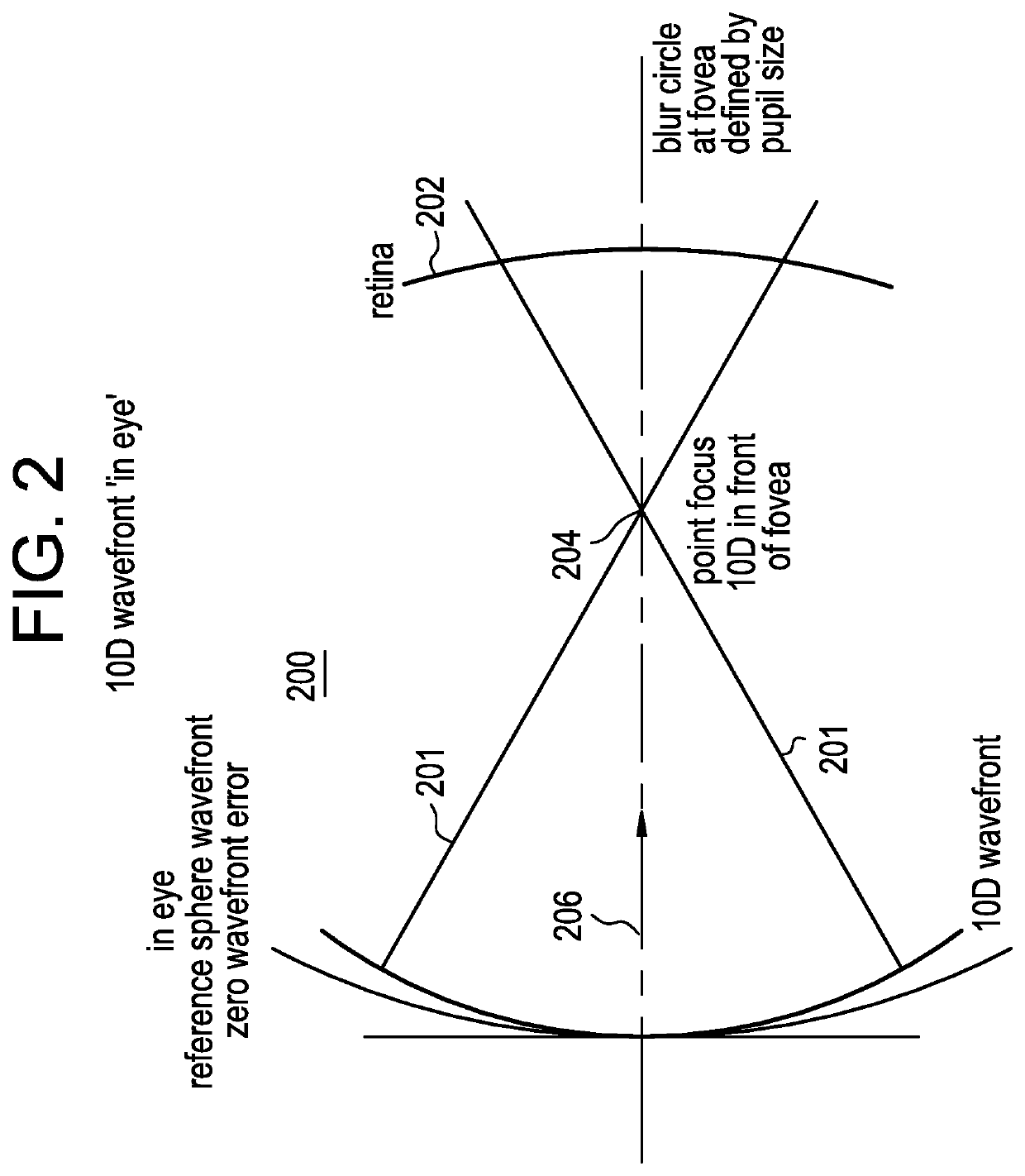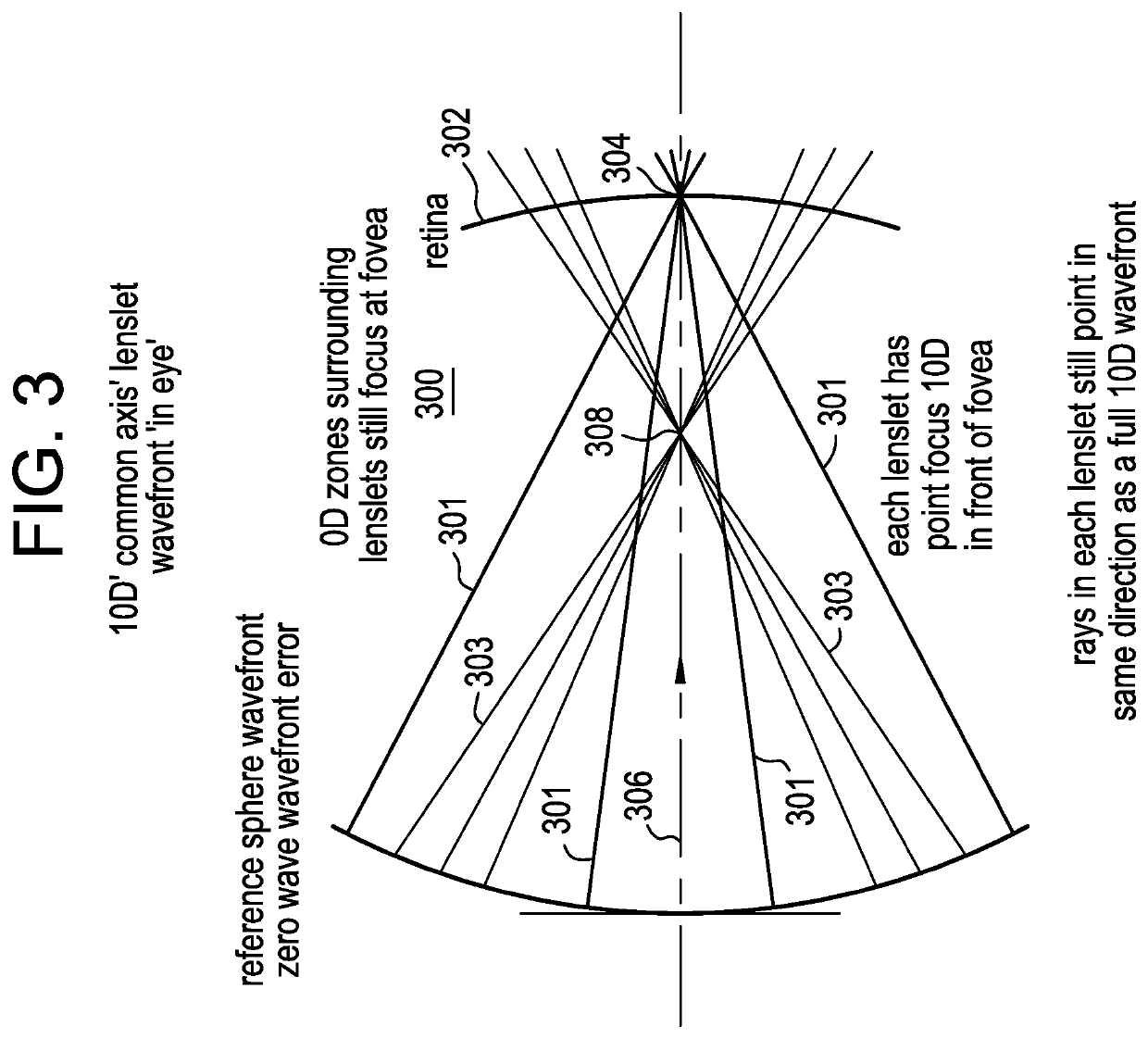Ophthalmic lens comprising lenslets for preventing and/or slowing myopia progression
a technology of ophthalmic lenses and lenslets, which is applied in the field of ophthalmic lenses, can solve the problems of hyperopia, eye growth is not good enough, and the eye is not growing fast enough, so as to achieve better distance vision correction
- Summary
- Abstract
- Description
- Claims
- Application Information
AI Technical Summary
Benefits of technology
Problems solved by technology
Method used
Image
Examples
Embodiment Construction
[0039]Experiments have shown that the eyes respond to hyperopic defocus that leads to axial elongation, therefore delivering higher plus powers to the central retina should slow myopia progression. However, just delivering higher plus power to the central retina may have a deleterious effect on vision. Accordingly, an ophthalmic lens, for example, a contact lens with negative base power that provides optimal refractive correction for distance in combination with small areas or islands of positive power (lenslets) arranged in a particular pattern to deliver positive foci of light in front of the retina will provide the myopic defocus to inhibit myopia progression without impacting visual acuity and contrast sensitivity.
[0040]The present invention comprises an ophthalmic lens for at least one of slowing, retarding or preventing myopia progression. The ophthalmic lens includes, within its primary optical zone, multiple non-coaxial plus power zones. Each non-coaxial plus power zone is a...
PUM
 Login to View More
Login to View More Abstract
Description
Claims
Application Information
 Login to View More
Login to View More - R&D
- Intellectual Property
- Life Sciences
- Materials
- Tech Scout
- Unparalleled Data Quality
- Higher Quality Content
- 60% Fewer Hallucinations
Browse by: Latest US Patents, China's latest patents, Technical Efficacy Thesaurus, Application Domain, Technology Topic, Popular Technical Reports.
© 2025 PatSnap. All rights reserved.Legal|Privacy policy|Modern Slavery Act Transparency Statement|Sitemap|About US| Contact US: help@patsnap.com



